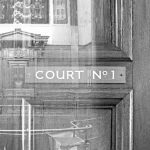An Attachment of Earnings Order (AEO) is a legal tool used to recover unpaid debts by deducting money directly from a debtor’s wages. This method ensures that creditors receive regular payments towards the debt, providing a reliable alternative to other enforcement options like bailiff action or High Court enforcement. This article explains what an AEO is, how it works, and the key steps involved in obtaining and enforcing one.
What is an Attachment of Earnings Order?
An AEO is a court order instructing an employer to deduct a set amount from an employee’s wages and send it to the creditor, via the Centralised Attachment of Earnings Payments (CAPS) office. This process continues until the debt is paid off or the order is discharged. AEOs are typically used when other debt recovery methods have failed or if the debtor is unwilling to make voluntary payments.
AEOs apply to employed individuals and are not available for those who are self-employed, unemployed, or receiving benefits. The Attachment of Earnings Act 1971 governs the process.
When Can an AEO Be Used?
Creditors can apply for an AEO in the following situations:
- County Court Judgments (CCJs): The debtor has a CCJ against them but has failed to make the required payments.
- Employment Status: The debtor is in regular employment and earns a sufficient wage to cover the deductions.
Certain debts, such as council tax arrears, child maintenance, and unpaid fines, may result in a similar type of order initiated by public authorities.
How Does an AEO Work?
The AEO process involves several key steps, from applying for the order to enforcing it through the debtor’s employer. Here’s how it works:
Step 1: Creditor Applies for the AEO
The creditor must complete an application form (Form N337) and submit it to the court where the original judgment was issued. The application requires details of the debt and the employer’s information.
Step 2: Court Considers the Application
Once the application is received, the court reviews the debtor’s financial circumstances. The debtor may be required to complete a statement of means form (Form N56), providing details about their income, expenses, and dependents. The Court will also often write to the employer in order to confirm employment.
Step 3: Order is Issued
If the court is satisfied that the debtor can afford deductions, it issues the AEO. This order specifies:
- The amount to be deducted from the debtor’s wages each pay period.
- The total debt to be recovered, including any interest and court fees.
Step 4: Employer Enforces the Order
The employer is legally obligated to comply with the AEO. They must deduct the specified amount from the debtor’s wages and transfer it to the creditor or the court as directed.
Step 5: Payments Continue Until the Debt is Cleared
Deductions continue until the entire debt is paid or the order is revoked. Employers may charge the debtor an administration fee of up to £1 per deduction.
Key Features of an AEO
AEOs have several essential features designed to ensure fairness and efficiency:
- Protected Earnings Rate: The court sets a protected earnings rate to ensure the debtor retains enough income to cover essential living expenses. Employers cannot deduct amounts that would reduce the debtor’s earnings below this threshold.
- Priority of Orders: If a debtor has multiple AEOs, priority is given to certain debts, such as child maintenance or council tax. The court may consolidate non-priority debts into a single order.
- Penalties for Non-Compliance: Employers who fail to comply with an AEO can face legal penalties, including fines.
Advantages of AEOs
AEOs offer several benefits for creditors and debtors alike:
For Creditors:
- Regular Payments: Ensures consistent recovery of the debt.
- Employer Involvement: Reduces the risk of non-payment by placing responsibility on the employer.
- Court Oversight: Provides a legal framework that ensures compliance.
For Debtors:
- Affordability: Payments are based on their financial circumstances.
- Avoids Bailiffs: Prevents the need for intrusive enforcement actions.
- Clear Path to Resolution: Provides a structured way to repay the debt.
Limitations of AEOs
While effective, AEOs have some limitations:
- Employment Requirement: AEOs only apply to employed individuals. Self-employed or unemployed debtors cannot be subject to this order.
- Impact on Employment: Debtors may feel embarrassed about their employer’s involvement in their financial affairs.
- Insufficient Earnings: If a debtor’s earnings are too low, deductions may not be possible, delaying repayment.
Challenging an AEO
Debtors have the right to challenge an AEO in certain circumstances, such as:
- Financial Hardship: If the deductions cause undue financial strain, the debtor can request a variation order to reduce the payment amount.
- Incorrect Information: If the order is based on incorrect employment or financial details, the debtor can apply for it to be set aside.
- Disputed Debt: If the debtor disputes the validity of the debt, they can appeal the judgment.
To challenge an AEO, the debtor must apply to the court and provide evidence supporting their claim.
What Happens if the Debtor Changes Jobs?
If the debtor changes employment, they are required to notify the court of their new employer’s details. The court will then transfer the AEO to the new employer. Failure to provide this information can result in penalties, including further legal action.
Alternatives to AEOs
In some cases, creditors may consider alternative enforcement methods, such as:
- Charging Orders: Securing the debt against the debtor’s property.
- Third-Party Debt Orders: Freezing money held in the debtor’s bank account.
- High Court Enforcement: Recovering the debt through a High Court Enforcement Officer.
Each option has its advantages and drawbacks, depending on the debtor’s financial situation and the nature of the debt.
Wrapping up
Attachment of Earnings Orders are a valuable tool for recovering unpaid debts, providing a structured and reliable way to ensure creditors receive payments. By understanding how AEOs work and the steps involved in obtaining and enforcing them, creditors can make informed decisions about whether this method is suitable for their situation. For debtors, AEOs offer a manageable way to repay debts while maintaining financial stability. Seeking legal advice is recommended for both parties to ensure compliance and maximise the chances of a successful outcome.


